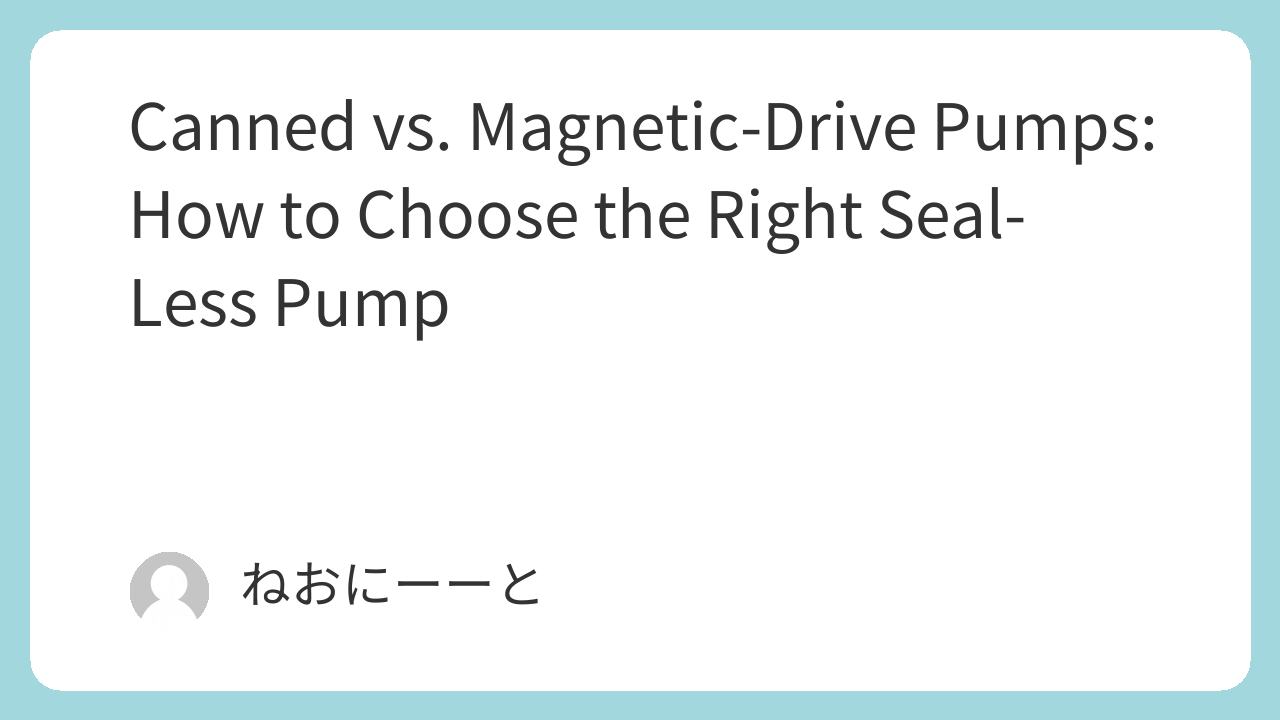Seal‑less pumps are essential in industries like chemical and pharmaceutical production, where leakage must be minimized. Two popular types—canned (canned rotor) pumps and magnetic‑drive pumps—both eliminate shaft seals, but they operate on different design principles and suit different fluids.
Choosing the right one impacts performance, durability, and process compatibility. This article walks through their differences in drive mechanism, materials, cooling behavior, sealing method, and practical selection tips.
Why Mechanical Seals Leak in Pumps — and How to Fix It
Centrifugal Pump Basics: Understanding Structure, Components, and Key Functions
How to Select Pumps for Batch Chemical Plants: A Practical Guide for Engineers
🔹 What Is a Seal‑Less Pump?
Seal-less pumps have no shaft seals or packing, significantly reducing leakage risk.
- Canned pumps are typically made of stainless steel for general process use.
- Magnetic‑drive pumps often use PTFE or other corrosion-resistant plastics for handling aggressive chemicals.
⚙️ Key Differences in Drive Mechanism
- Canned pump: Direct drive. The motor coil surrounds the impeller and shaft inside a pressure-sealed chamber. It behaves like a submerged motor.
- Magnetic-drive pump: Indirect drive. A rotating magnetic coupling transfers torque across a containment shell to drive the impeller—no physical seal and no direct contact.
🔧 Materials & Seal Elements
- Canned pumps: Metal wetted parts (SUS304 or SUS316L). Sealed with gaskets—simple and durable.
- Mag-drive pumps: Plastic-lined wetted parts (e.g. PTFE); sealing often via O‑rings or gaskets. Be cautious: O‑rings can be more expensive and shorter-lived. Gaskets offer better seal area and longevity.
🌡️ Cooling & Heat Transfer
- Canned pumps: Cooled by process fluid—heat from the motor is transferred into the liquid. May raise fluid temperature.
- Magnetic‑drive pumps: Cooled by ambient air; process fluid sees minimal heat transfer, which enhances safety especially with temperature-sensitive fluids.
🧩 Other Considerations
- Compatibility & range: Canned pumps offer more configurations (vertical/horizontal, jacketed variants) and pump sizes.
- Spare parts logistics: Mag-drive pumps have modular parts—but require inventory of O‑rings, bearings, and containment shells.
- Design flexibility: Canned pumps can handle higher pressures and general service more broadly, whereas magnetics are ideal for corrosive or hazardous fluids.
✅ Conclusion
Both canned and magnetic‑drive pumps offer seal-less reliability—but your choice depends on process and fluid properties:
| Use Case | Recommended Type |
|---|---|
| General water or clean liquids, need robustness | Canned pump |
| Corrosive chemicals (e.g. strong acids, solvents) | Magnetic‑drive pump |
| Low heat transfer to process fluid, high safety needed | Mag-drive pump |
| High-pressure, high flow, diverse configurations | Canned pump |
By understanding these differences, engineers can confidently specify the appropriate pump for safety, efficiency, and serviceability.

Comments